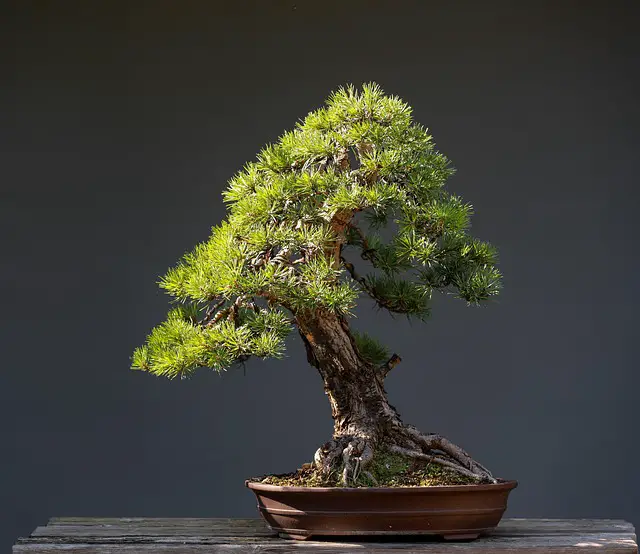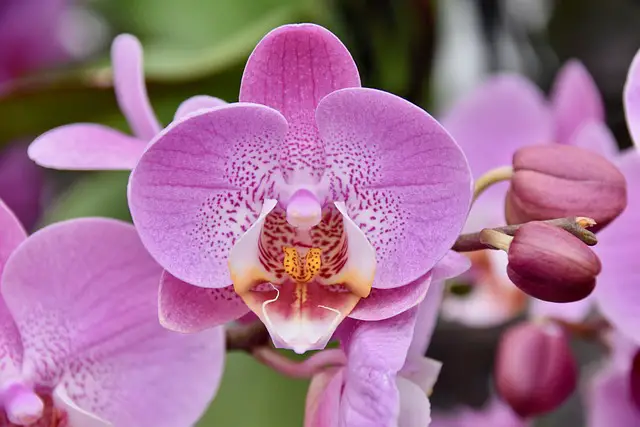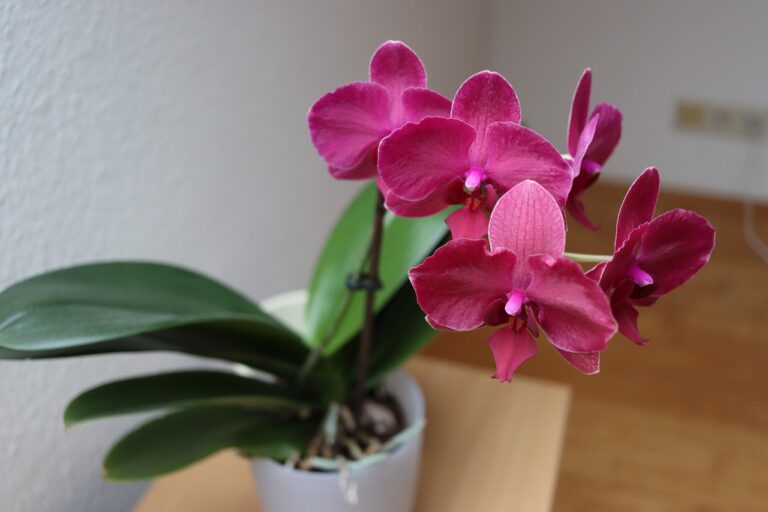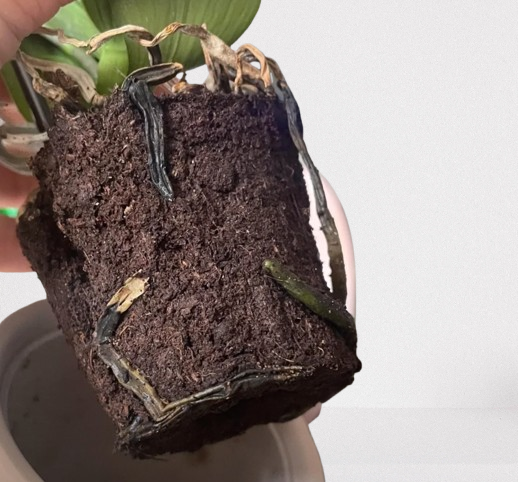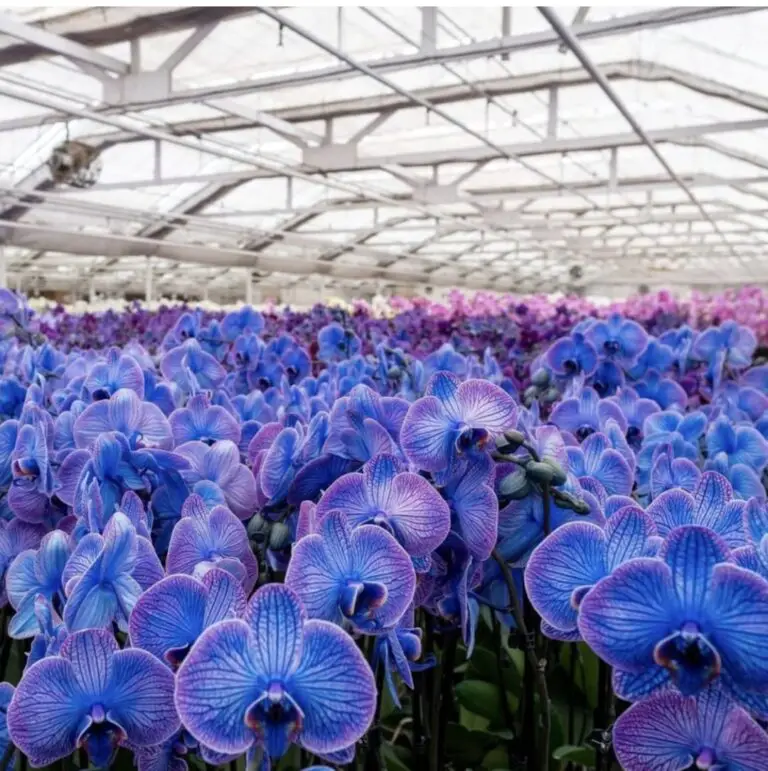Orchid crown rot is one of the most dreaded conditions orchid growers face, especially among Phalaenopsis and other monopodial varieties. Caused primarily by fungal or bacterial infections, this silent killer often takes hold when excess moisture lingers in the crown—the area where the leaves join at the base—leading to soft, blackened, and decaying tissue. Orchid crown rot can spread swiftly and kill the entire plant if left untreated.But the good news is that early detection and the right recovery techniques can give your orchid a fighting chance.
Crown rot doesn’t discriminate between novice gardeners and experienced orchid enthusiasts—it can strike any time conditions become too damp or air circulation is compromised. However, learning to recognize the signs early, understanding what causes it, and knowing how to act swiftly can make the difference between saving your plant and watching it wilt away. That’s where this guide comes in.
- 1 Understanding Orchid Crown Rot
- 2 1. What is Crown Rot in Orchids
- 3 2. Common Signs and Symptoms
- 4 3. Causes and Contributing Factors
- 5 4. Orchids Most Susceptible to Crown Rot
- 6 Diagnosing the Damage
- 7 5. How to Identify Early vs. Advanced Crown Rot
- 8 6. Tools and Methods for Examining the Crown
- 9 7. When to Intervene and When It’s Too Late
- 10 Immediate First Aid
- 11 8. Remove Affected Leaves and Tissue Carefully
- 12 9. Sterilize Tools Before and After Treatment
- 13 10. Apply Hydrogen Peroxide or Fungicidal Solution
- 14 11. Use Cinnamon Powder or Natural Antifungals
- 15 12. Let the Orchid Dry Completely
- 16 Treatment Techniques
- 17 13. Repot in Fresh, Well-Draining Orchid Mix
- 18 14. Improve Airflow and Light Exposure
- 19 15. Reduce Watering Frequency
- 20 16. Use Systemic Fungicide (If Necessary)
- 21 17. Create a Temporary Humidity Dome
- 22 Long-Term Recovery and Prevention
- 23 18. Use Sloped Potting to Avoid Water Pooling
- 24 19. Maintain Regular Inspections and Cleanups
- 25 20. Set Up a Watering Schedule Based on Humidity and Season
- 26 Aftercare Tips
- 27 FAQs on Orchid Crown Rot
Understanding Orchid Crown Rot
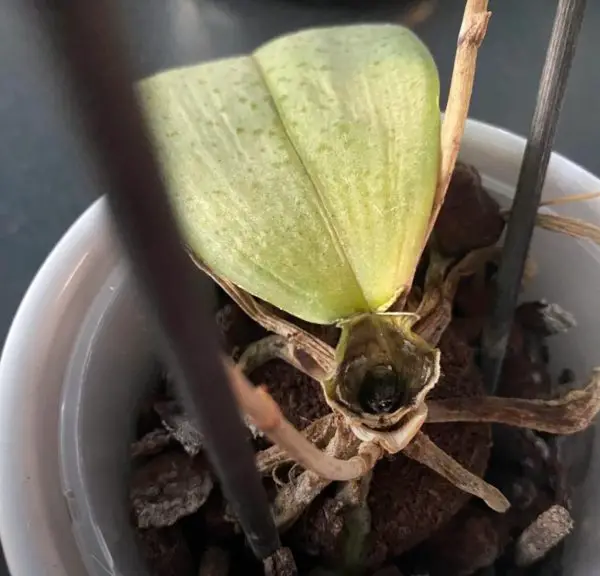
1. What is Crown Rot in Orchids
Crown rot is a disease that occurs when water becomes trapped in the center of the orchid’s leaf base, leading to fungal or bacterial infection. The condition is especially common in Phalaenopsis orchids, though other types can be affected as well. Once rot sets in, the tissue begins to break down and becomes a soft, discolored mush.
2. Common Signs and Symptoms
Crown rot symptoms include a mushy, blackened, or brown crown, a bad odour coming from the crown area, and yellowing or drooping leaves that begin in the centre and work their way outward.that fall off easily with minimal effort. Recognizing these early signs can make all the difference in saving your plant.
3. Causes and Contributing Factors
Crown rot typically results from overwatering, poor air circulation, and high humidity without adequate ventilation. When water is allowed to pool in the crown and doesn’t evaporate quickly, it becomes a prime site for fungal or bacterial growth. Environmental factors and improper irrigation methods are typically to fault.
4. Orchids Most Susceptible to Crown Rot
Moth orchids, or Phalaenopsis, are especially vulnerable to crown rot because of their rosette-shaped leaf arrangement.This structure makes it easier for water to sit in the crown, increasing the risk of infection, especially in overly humid or poorly ventilated environments.
Diagnosing the Damage
5. How to Identify Early vs. Advanced Crown Rot
In the early stages, crown rot may appear as soft, yellowing leaves or slight discoloration around the center of the orchid. As the disease progresses, the tissue becomes blackened, mushy, and may emit a foul odor. Advanced cases often involve leaf drop and decay spreading into the root system.
6. Tools and Methods for Examining the Crown
Examine the crown area carefully using sterile instruments such a magnifying glass, tweezers, and scissors.A flashlight can help you spot hidden pockets of rot. It’s important to examine both the visible crown and the surrounding leaf bases for any signs of infection.
7. When to Intervene and When It’s Too Late
Intervention is effective as long as some healthy roots or firm crown tissue remain. If you notice new growth or intact leaves, immediate treatment can save the plant. However, if the rot has destroyed the crown and root system entirely, the chances of recovery are minimal, and you may need to consider propagation.
Immediate First Aid
8. Remove Affected Leaves and Tissue Carefully
Use sterilized scissors to trim away all visibly infected and mushy tissue. Cut until you reach firm, healthy material, and discard the diseased parts. Avoid touching healthy tissue with contaminated tools to reduce the risk of further spreading the infection.
9. Sterilize Tools Before and After Treatment
Always disinfect all tools before and after using them on the plant. Wipe down scissors, blades, and pots with rubbing alcohol or pass them through a flame. This essential step helps prevent introducing bacteria or fungi to healthy tissue.
10. Apply Hydrogen Peroxide or Fungicidal Solution
Apply a 3% hydrogen peroxide solution to the afflicted crown to flush it.It will bubble on contact with infected areas, helping to kill pathogens and clean the wound. Repeat daily for a few days to ensure thorough disinfection and prevent reinfection.
11. Use Cinnamon Powder or Natural Antifungals
Cinnamon acts as a natural fungicide and is highly effective when sprinkled directly onto the cleaned crown.It aids in wound drying and stops additional fungus growth. Other natural antifungals like neem oil may also be used with care.
12. Let the Orchid Dry Completely
After treatment, place the orchid in a dry, warm location with excellent air circulation for at least 24 hours. This step is crucial to preventing further moisture accumulation and giving the plant a chance to start healing.
Treatment Techniques
13. Repot in Fresh, Well-Draining Orchid Mix
Dispose of the old potting media and repot the orchid in a fresh, sterile orchid mix with excellent drainage. A bark-based mix is ideal, as it prevents moisture retention and reduces the risk of future crown rot incidents.
14. Improve Airflow and Light Exposure
Place the orchid in a location with strong, indirect light and steady air movement. A nearby fan or open window can help enhance ventilation, which is key to preventing fungal growth in damp conditions.
15. Reduce Watering Frequency
Only until the potting medium is almost dry should you water the orchid. Avoid watering from above and ensure no water sits in the crown. Instead, water near the base or use the soak-and-drain method to prevent pooling.
16. Use Systemic Fungicide (If Necessary)
If hydrogen peroxide and natural remedies are not enough, apply a systemic fungicide such as thiophanate-methyl. Follow the manufacturer’s instructions carefully and isolate the plant to avoid exposing others to the chemicals.
17. Create a Temporary Humidity Dome
To encourage healing, place the orchid inside a clear plastic container or humidity dome. Maintain ventilation to avoid condensation buildup. This method boosts humidity while protecting the crown from direct moisture.
Long-Term Recovery and Prevention
18. Use Sloped Potting to Avoid Water Pooling
When potting your orchid, position it slightly off-center or at an angle to encourage water runoff. This prevents water from sitting in the crown and greatly reduces the chance of rot returning.
19. Maintain Regular Inspections and Cleanups
Set a weekly routine to inspect your orchid for early signs of disease or pests. Make sure the potting media stays fresh and well-drained throughout time, and use a moist cloth to wipe the leaves clean.
20. Set Up a Watering Schedule Based on Humidity and Season
Tailor your watering schedule to your local environment. During cooler months, reduce watering frequency, while in hotter, drier seasons, increase humidity without overwatering. To maintain consistency, use a calendar or reminder tool.
Aftercare Tips
Recovery from crown rot can take weeks or even months, depending on the severity of the damage. During this time, keep the orchid in a stable environment with indirect sunlight and consistent warmth. Monitor for signs of new root and leaf growth, and avoid fertilizing until the plant has stabilized. If no recovery is observed after an extended period, consider propagating healthy tissue or discarding the plant to protect others in your collection.
Crown rot doesn’t have to be a death sentence for your orchid. By acting quickly and following these 20 powerful methods, you can restore health and vitality to your plant. Prevention is always easier than treatment, so stay vigilant with your watering habits, ensure good airflow, and keep your tools clean. With time, care, and attention, your once-struggling orchid can return to its beautiful blooming state.
FAQs on Orchid Crown Rot
1. What is Orchid Crown Rot?
A dangerous bacterial or fungal disease that damages orchid plants’ crowns is called orchid crown rot.This condition typically results from excessive moisture accumulating in the plant’s crown, especially during watering. If left untreated, Orchid Crown Rot can quickly lead to plant death, making early detection crucial.
2. What causes Orchid Crown Rot in orchids?
Orchid Crown Rot is mainly caused by water sitting in the crown of the orchid for too long. This moisture creates an ideal environment for bacteria and fungi to thrive, especially in warm and humid conditions. Overwatering and poor air circulation are common contributors to Orchid Crown Rot.
3. How can I identify Orchid Crown Rot?
You can identify Orchid Crown Rot by checking for a mushy, discolored, or blackened crown area on your orchid. Infected plants may also emit a foul odor and display yellowing leaves. Quick identification and action are critical when dealing with Orchid Crown Rot to prevent it from spreading.
4.Can other orchids contract Orchid Crown Rot?
Yes, Orchid Crown Rot can spread to other orchids, particularly if the same tools or water sources are shared between healthy and infected plants. Always sterilize your gardening tools and isolate any orchid that shows signs of Orchid Crown Rot to prevent contamination and further infection.
5. How do I treat Orchid Crown Rot?
To treat Orchid Crown Rot, first remove the plant from its pot and cut away all affected tissue using sterile tools. To disinfect the crown, use hydrogen peroxide or a fungicide.Allow the plant to dry completely before repotting it in fresh, well-draining orchid mix to aid recovery.
6. Can I prevent Orchid Crown Rot with proper watering?
Yes, proper watering techniques are one of the most effective ways to prevent Orchid Crown Rot. Always water your orchid in the morning and avoid letting water pool in the crown. Tilt the plant slightly during watering to help excess moisture drain away from the crown area.
7. What types of orchids are most prone to Orchid Crown Rot?
Phalaenopsis orchids are especially vulnerable to Orchid Crown Rot due to their crown structure, which easily traps water. However, any orchid species can develop Orchid Crown Rot if kept in overly damp, poorly ventilated conditions. Monitoring moisture levels and airflow is key to prevention.
8. Should I repot my orchid if it has Orchid Crown Rot?
Yes, repotting is necessary when dealing with Orchid Crown Rot. Repot the orchid in a new, sterile media after removing all diseased material.This helps eliminate any lingering pathogens and gives the orchid a healthier environment in which to recover from Orchid Crown Rot damage.
9. Can Orchid Crown Rot return after treatment?
Unfortunately, Orchid Crown Rot can return if the conditions that caused it aren’t corrected. It’s essential to adjust your care routine—improve drainage, reduce watering frequency, and ensure good air movement. Regular inspection of your orchids helps catch any recurrence of Orchid Crown Rot early.
10. Is Orchid Crown Rot fatal to orchids?
If not treated promptly, Orchid Crown Rot can be fatal. The disease rapidly breaks down the crown tissue, which is vital for the orchid’s growth. Acting quickly and decisively is your best defense against the irreversible damage caused by Orchid Crown Rot in orchid plants.
11. What does Orchid Crown Rot smell like?
Orchid Crown Rot often produces a foul, musty smell due to bacterial decay. If you notice an unusual odor coming from your orchid’s base, it’s a strong indicator of Orchid Crown Rot. This symptom should prompt immediate inspection and treatment to avoid total plant loss.
12. Does Orchid Crown Rot affect orchid roots?
While Orchid Crown Rot primarily starts at the crown, it can extend to the roots if the infection worsens. The compromised crown weakens the plant’s structure, eventually leading to root rot as well. Preventing Orchid Crown Rot is essential to maintaining the overall health of your orchid.
13. How can air circulation help prevent Orchid Crown Rot?
Good air circulation helps dry excess moisture from your orchid’s crown, reducing the likelihood of Orchid Crown Rot. Place a small fan near your orchids or ensure the growing area has natural airflow. This simple step can drastically lower the chances of developing Orchid Crown Rot.
14. Can neem oil be used to treat Orchid Crown Rot?
Neem oil has antifungal properties and can sometimes help prevent minor infections, but it’s not always effective for advanced Orchid Crown Rot. For more severe cases, chemical fungicides or hydrogen peroxide are better options. Use neem oil as a preventive measure rather than a cure for Orchid Crown Rot.
15. What time of year is Orchid Crown Rot most common?
Orchid Crown Rot is most common in warm, humid months when moisture levels are high. During these times, take extra precautions with watering and ventilation. Awareness of seasonal changes can help you better manage the risks associated with Orchid Crown Rot in your orchid care routine.

